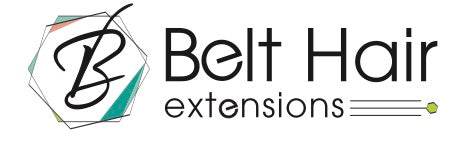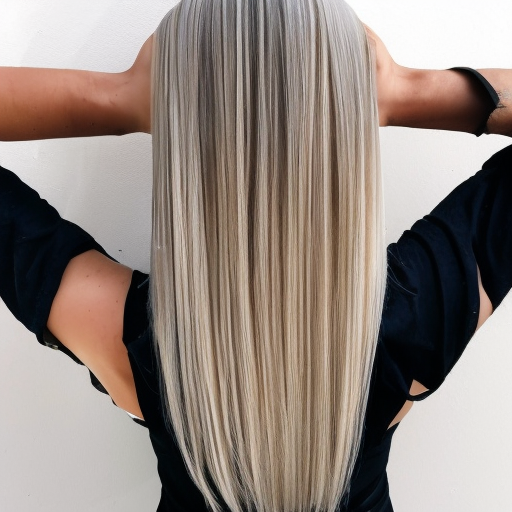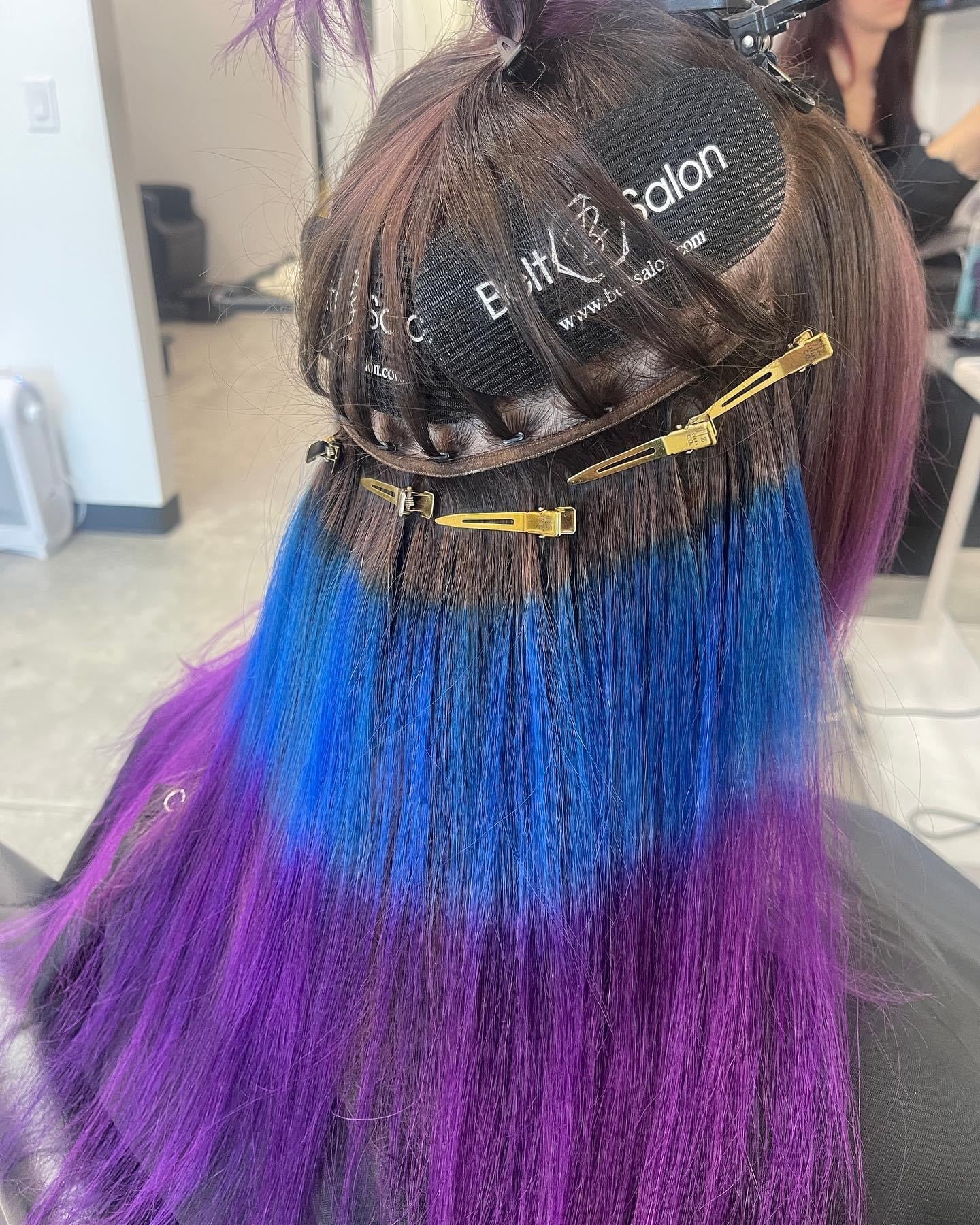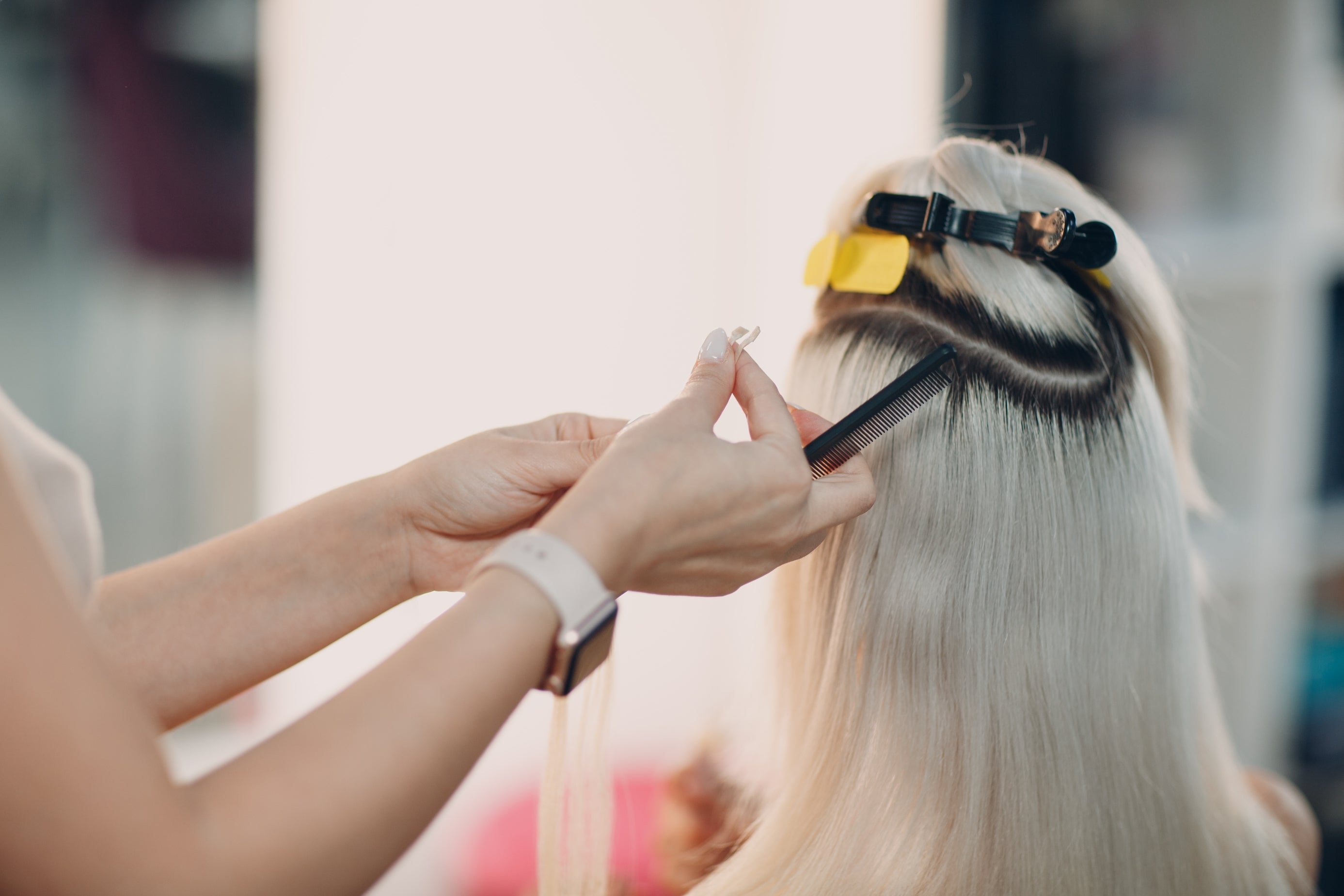Color Matching Tips for Seamless Hair Extension Integration: A Comprehensive Guide for Belt Hair Extensions Stylists
When it comes to hair extensions, achieving a perfect color match is essential for a seamless and natural look.
As a Belt Hair Extensions stylist, understanding color matching techniques is crucial for satisfying your clients and growing your business. In this comprehensive guide, we will discuss color matching tips and tricks for seamless hair extension integration, focusing on the importance of using high-quality remy hair extensions.

Why Remy Hair Extensions are the Best Choice for Color Matching
Choosing the right type of hair extensions plays a significant role in color matching. Remy hair extensions, which are made from 100% human hair, are the best choice for color matching for several reasons:
-
Natural appearance: Remy hair extensions have a natural texture and shine, which blend seamlessly with the client's own hair.
-
Consistent color: Remy hair extensions are collected in a way that maintains the natural direction of the hair cuticles, resulting in consistent color throughout the extension.
-
Customizability: Remy hair extensions can be dyed and toned to match the client's hair color precisely, allowing for a perfect color match.
-
Longevity: High-quality remy hair extensions last longer and are more resistant to color fading, ensuring the color match remains seamless over time.
By choosing remy hair extensions for your Belt Hair Extensions clients, you'll be able to achieve the best possible color match, resulting in satisfied clients and a growing business.
Understanding the Color Wheel and Color Theory
Before diving into specific color matching techniques, it's essential to understand the color wheel and basic color theory. The color wheel is a visual representation of the relationships between primary, secondary, and tertiary colors.
By understanding the color wheel, you can identify complementary colors and choose the right tones to achieve a seamless color match. For example, if your client's hair has a warm, golden undertone, using hair extensions with a cool, ashy undertone may result in a mismatched and unnatural appearance.
Tip 1: Identifying Your Client's Hair Undertone
The first step in color matching is identifying your client's hair undertone. Hair undertones can be warm, cool, or neutral. Here's a quick guide to help you determine your client's undertone:
-
Warm undertones: Hair with warm undertones usually has a golden, honey, or reddish hue. Think caramel, auburn, or strawberry blonde.
-
Cool undertones: Hair with cool undertones often appears ashy or silvery. Think platinum blonde, cool brown, or blue-black.
-
Neutral undertones: Hair with neutral undertones is a balanced mix of warm and cool hues. Think natural blonde, medium brown, or soft black.
To identify your client's hair undertone, examine their hair in natural light. Look for any dominant hues that appear in their hair and determine if those hues are warm, cool, or neutral.
Tip 2: Choosing the Right Hair Extension Shade
Once you've identified your client's hair undertone, it's time to choose the right hair extension shade. When selecting a shade, keep the following tips in mind:
-
Match the ends, not the roots: The hair extensions will blend with the client's hair primarily at the ends, so it's essential to match the extension color to the ends of the client's hair rather than the roots.
-
Consider multi-tonal extensions: Hair extensions with a mix of colors can create a more natural look, as they mimic the multi-tonal appearance of natural hair. Look for extensions with subtle highlights and lowlights that complement your client's hair color.
-
Opt for a slightly lighter shade if unsure:** If you're unsure between two shades, opt for the slightly lighter one. It's easier to darken hair extensions than to lighten them without causing damage.
-
Custom color when necessary: If you can't find the perfect match, you can custom color the extensions to achieve the desired shade. Remember to use high-quality, professional hair color products to ensure the extensions maintain their integrity.
-
Color swatches are an invaluable tool for achieving accurate color matching. They allow you to compare different shades of hair extensions to your client's hair in various lighting conditions. When using color swatches, follow these tips for the best results:
-
Examine the hair in natural light: Natural light provides the most accurate representation of color. If possible, take your client and the color swatches outdoors or near a window with ample sunlight to compare colors.
-
Test multiple shades: Compare several shades that are close to your client's hair color to determine the best match. This will help you avoid choosing a shade that's too dark or too light.
-
Check the blend: Hold the color swatch against the client's hair at different angles to ensure a seamless blend. Pay close attention to the ends of the client's hair, where the extensions will be most visible.
-
-
If you can't find a pre-made hair extension color that perfectly matches your client's hair, you may need to custom color the extensions. Here are some tips for custom coloring hair extensions:
-
Perform a strand test: Always perform a strand test on a small section of the hair extension before coloring the entire set. This will help you determine how the hair will react to the color and allow you to adjust your formula accordingly.
-
Use professional hair color products: High-quality, professional hair color products are designed to protect the integrity of the hair and provide long-lasting, consistent color results.
-
Follow the manufacturer's instructions: Each hair color product is unique, so it's essential to follow the manufacturer's instructions for the best results. This includes the recommended processing time and mixing ratios.
-
Monitor the color processing closely: Keep a close eye on the hair extensions during the coloring process, checking the color every few minutes to ensure the desired result.
-
Rinse and condition the hair extensions: After the coloring process is complete, rinse the hair extensions thoroughly and apply a deep conditioning treatment. This will help to seal in the color and maintain the health and shine of the hair extensions.
-
-
Once you've achieved the perfect color match, it's essential to blend the hair extensions with your client's natural hair for a seamless integration. Here are some blending techniques to help you achieve the most natural look:
-
Layering: Layering the hair extensions creates a more natural, blended appearance. Use professional shears to trim the extensions, creating soft layers that mimic the client's natural hair.
-
Texturizing: Texturizing techniques, such as point cutting or slide cutting, can help remove bulk from the hair extensions and create a more seamless blend with the client's hair.
-
Curling or styling: Curling or styling both the client's hair and the extensions together can help to blend the two and create a cohesive, natural look.
Achieving a seamless color match is essential for creating natural-looking hair extensions that your clients will love. By understanding color theory, using high-quality remy hair extensions, and implementing the tips and techniques outlined in this guide, you'll be well-equipped to provide exceptional color matching services at Belt Hair Extensions.
With consistent practice and dedication to mastering these color matching tips, you'll be able to build a reputation as a skilled hair extension stylist, attracting more clients and growing your business. Stay up-to-date with the latest trends and techniques in the hair extension industry to ensure you're providing the best possible services to your clients and helping them achieve their hair goals.
-









Leave a comment